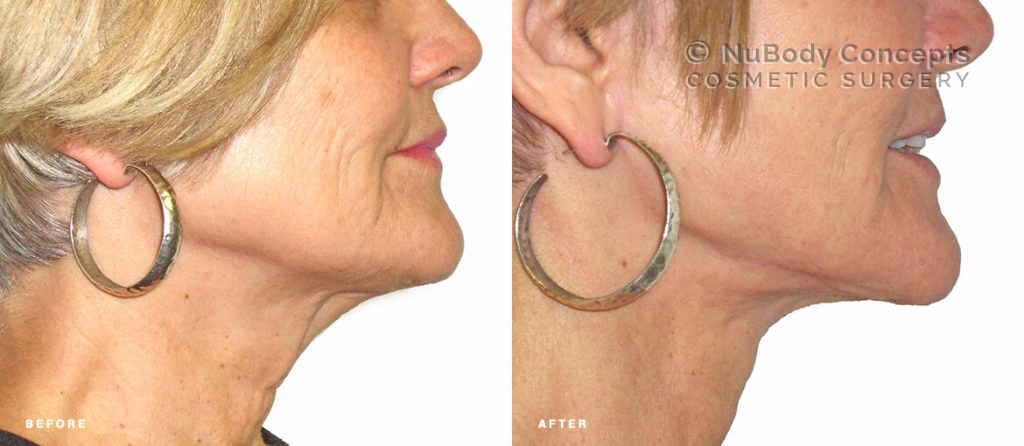Even though the recent emergence of minimally-invasive radio frequency assisted lipolysis has given patients new options for facial rejuvenation, a classical facelift remains a popular cosmetic procedure. At NuBody Concepts Nashville and NuBody Concepts Memphis, our board-certified plastic surgeons have helped hundreds of patients achieve excellent results from facelift surgery.
Below our cosmetic surgery team has outlined seven tips for your facelift recovery to ensure the best and lasting results.
According to the American Society of Plastic Surgery (ASPS), over 234,000 people had a facelift in the United States in 2020 – marking a 75% growth over the course of 20 years. This is remarkable, given the even faster growth recorded for other, less-invasive cosmetic treatments ranging from laser skin resurfacing to microdermabrasion and a vast variety of injectable fillers and wrinkle removers.
Perhaps this is not surprising, given that a facelift is still the premier method to permanently reduce sagging and remove deep wrinkles and folds, effectively turning the aging clock back up to 10 years in men and women. In fact, newer face rejuvenation technologies such as FaceTite and Renuvion have proven excellent supplements to a facelift, allowing the surgeon to combine surgery with skin tightening to create even better outcomes.

How to Recover From a Facelift
Facelift Recovery Tips
To give you an idea how to prepare for a facelift recovery, we have put together the following list of tips.
- Follow your doctor’s post-op instructions. Each doctor may have slightly different guidelines, and it’s important to follow them carefully. Don’t skip the required post-op visits – you want to make sure your surgeon can check on your healing and remove sutures and bandages as scheduled. You should know that facial sutures are typically removed earlier rather than later to avoid the formation of stitch marks. This could be as early as 5 days post-op. Make sure you do not miss any post-op appointments!
- Keep your head elevated. Swelling is a common occurrence after plastic surgery, but there are measures you can take to keep it to a minimum. Sleeping with your head propped up to at least 30 degrees avoids fluid buildup and swelling. A recliner works extremely well, but you can also use pillows to prop you up. Swelling typically peaks at 2-3 days post-op, so plan on sleeping with your head elevated for at least 3 days, ideally a week.
- Rest. Increased activity increases blood flow. Even acts as simple as turning your head frequently can have negative effects. The same goes for heavy lifting, which should be avoided during the first two weeks. Limiting most activities will help you avoid swelling or even bleeding, which could result in a hematoma. Stick to your surgeon’s recovery schedule. We typically recommend a period of rest of 2 weeks until the swelling has abated and the incisions have healed. Any strenuous exercise should be avoided for up to 4 weeks.
- Avoid alcohol, smoking, and certain medications. Your surgeon likely gave you a pre-op list of medications that should be stopped a few days prior to the procedure. Blood thinners in particular need to be avoided before any kind of surgery. For the sake of your health we hope that you’re not a smoker to begin with, but if you are, it’s a good idea to stop a few weeks before your surgery to make it easier to abstain afterwards. Alcohol dilates blood vessels and increases the chance of bruising and bleeding, so it should also be avoided during recovery. Take only those pain medications approved or subscribed by your plastic surgeon.
- Avoid extreme temperatures and sun exposure. During your recovery, you should be careful with heating pads and applying ice. Both are easy to overdo while the skin of the face is still numb and you can’t feel the heat or cold. In addition, your skin will be more sensitive after facelift surgery, meaning it burns more easily. If you can’t avoid the sun, make sure you apply a sunscreen with a high SPF. This is not limited to the 2 recommended weeks of downtime. It’s important to be watchful of sun exposure for as long as it takes for the scars to be completely healed, up to a year.
- Keep the incision clean. Use a solution of soapy water or saline to gently dab at your wounds. While it’s okay to resume showers on the second day after facelift surgery, you should stick to a mild shampoo and apply conditioner only to the tips of your hair while the wound is still healing. Once your surgeon has removed the sutures, you will likely be instructed to apply tape on a daily basis. Male patients are advised to hold off with shaving for the first week.
- Maintain a healthy diet. A recovery from a surgical procedure is not the time to engage in a diet or fasting. Your body relies on healthy nutrients and will require plenty of protein and vitamin C. Together with plenty of rest, this will ensure that your body is given all the right tools out needs for the healing process.
We hope that we have helped you navigate your facelift recovery. If you have additional questions, please visit our facelift recovery page.
Does a Non-Surgical Facelift Shorten the Recovery?
A facelift essentially require two weeks of downtime. While most of this downtime consists of a “social recovery” period where you stay out of the public eye but can go about your daily business unhindered, not everyone has that kind of time.
As mentioned above, FaceTite and Renuvion are minimally-invasive procedures that can achieve skin tightening previously only seen with surgery. This is great news for patients who are looking for a shorter recovery time. In addition, radio frequency treatments do not require heavy sedation, which typically reduces cost as well.
Studies have shown that radio frequency assisted lipolysis can result in 35%-45% skin contraction. The recovery is swift (1-2 days) and makes most of the above steps unnecessary. Best of all, it is done without a single stitch or scar!

Pay for Your Facelift with Interest-Free Financing
To compare pricing and payment options, visit our Facelift and Non-Surgical Facelift pages. We offer interest-free payment plans through different healthcare financing providers with just a few easy steps to check your credit score and complete your application.
References:
American Society of Plastic Surgeons 2020 Plastic Surgery Statistics Report.










